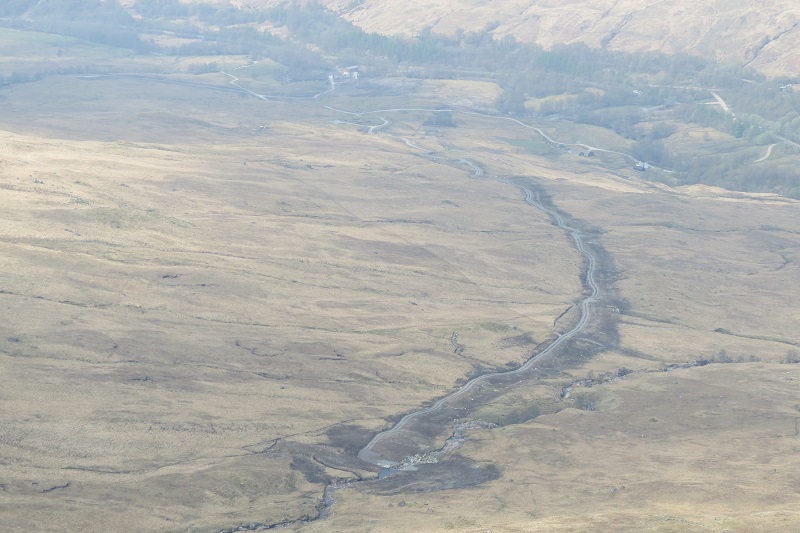
The planning permission granted for the four Glen Falloch hydro schemes in 2010 agreed to some permanent new (short) tracks along the bottom of the glen to the powerhouses, some widening of existing tracks but stipulated that the tracks to the intake dams required for construction purposes were to be temporary. Once work was completed they were to be restored, just like the land over the pipelines and access to the intakes was to be argocat on “green tracks”. This position was agreed by the Board at the time (which had rejected an early application for hydro in Glen Falloch back in 2003 because of the visual impact) and later endorsed in the LLTNPA’s “award winning” Supplementary Planning Guidance on Renewables which stated:
It is expected that any access tracks required for the construction will be fully restored unless there is an overwhelming reason why they should be retained for the operational phase of the development.
I could not work out from the original planning documentation (reference 2009/0249/ECN if you want to track this down at http://eplanning.lochlomond-trossachs.org/OnlinePlanning/?agree=0) why the tracks were still there. Then last week when the LLTNPA responded (see here) to some questions I had asked about the Glen Falloch schemes including the bright blue pipes. This showed a further four planning applications had been made to the LLTNPA between 2012 and 2015 to make ALL the temporary tracks permanent. All were agreed by officers under delegated authority and did not go to Committee. Given the history of the planning applications and the LLTNPA’s clear policy on hill tracks and renewables, that the LLTNPA Board has allowed staff to reverse their previous decisions appears to me totally wrong. A dereliction of the National Park’s duty to protect the landscape.
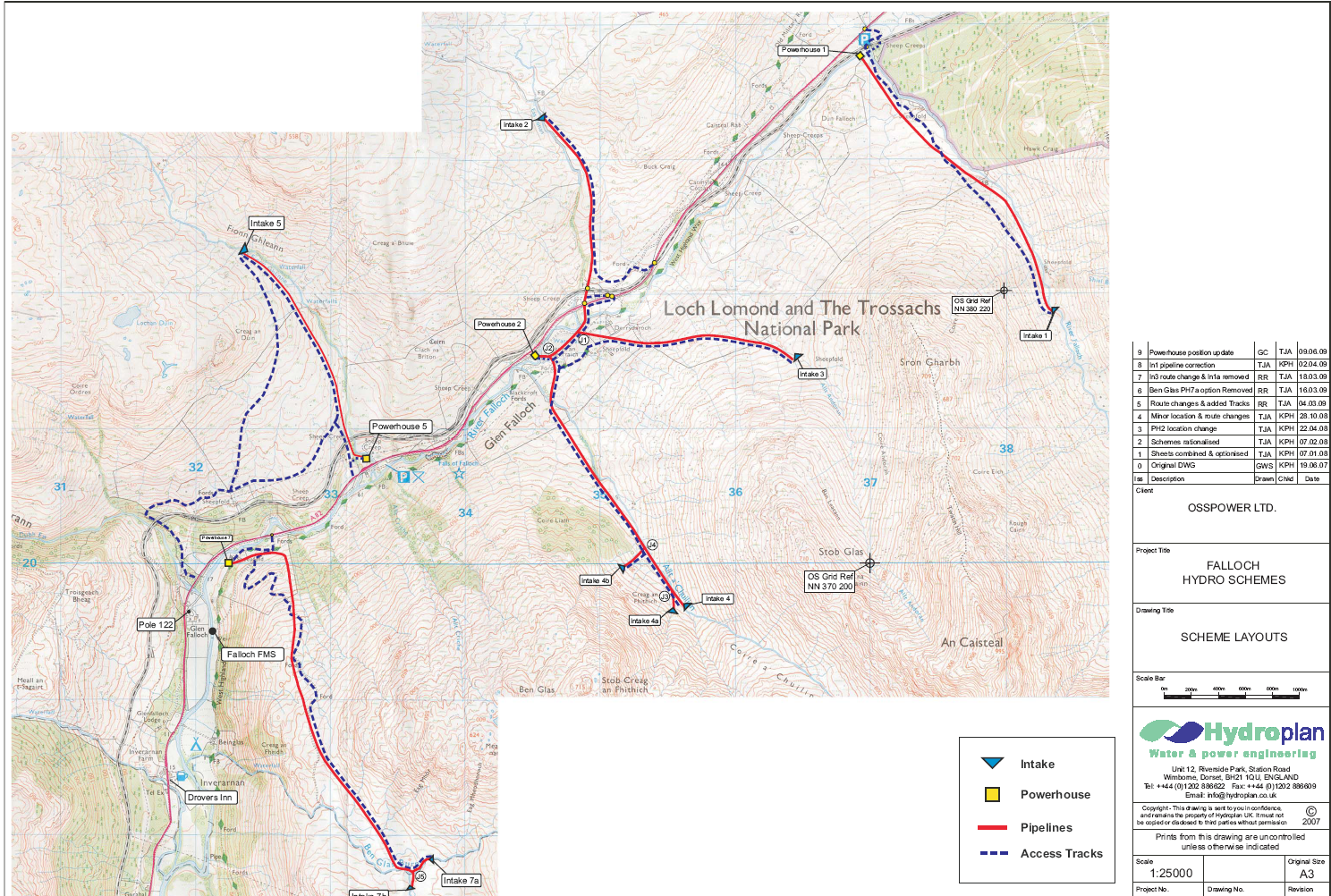
The first of the tracks to be approved was the Allt Fionn back in 2012. Originally the estate had wanted a permanent access track but the Committee report that recommended the Scottish Government approve the proposal in 2009 stated ” As a result of the pre-application process it has been agreed that the proposed access track to the intake will now be temporary rather than permanent.” It did not take long for Falloch Estates to get this decision reversed. The reason staff gave for approving this in their delegated report was:
As the proposed track is not just to service the intake, but also for estate/land management purposes which will be for the benefit of the estate as a whole, it is considered that the retention of this track is justified
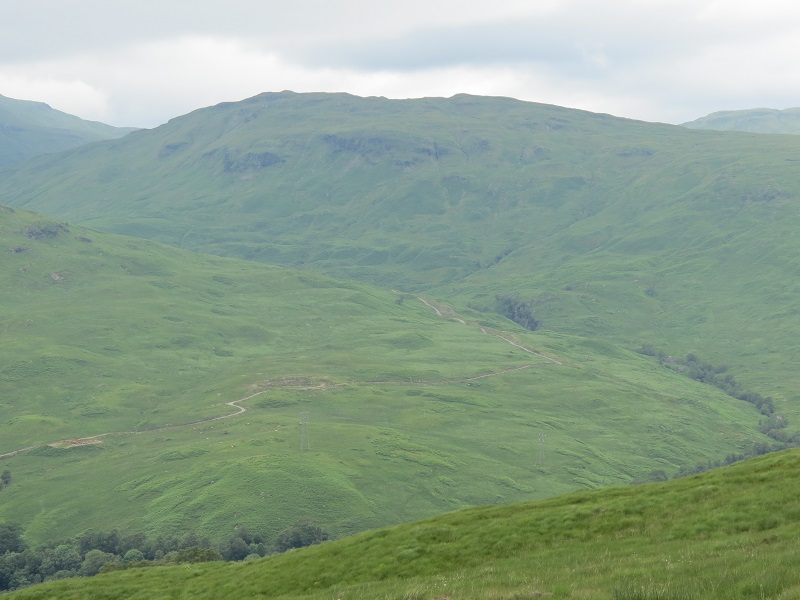
Note that the decision is justified as being for the benefit of the estate, for the landowner, not the public interest or the landscape. This reasoning, about the needs of the estate, was repeated in the three other delegated reports in which officers agreed that all the temporary access tracks should become permanent. Now the LLTNPA has a very clear policy on this set out in its SPG-Renewables-final:
It is expected that any access tracks required for the construction will be fully restored unless there is an overwhelming reason why they should be retained for the operational phase of the development.
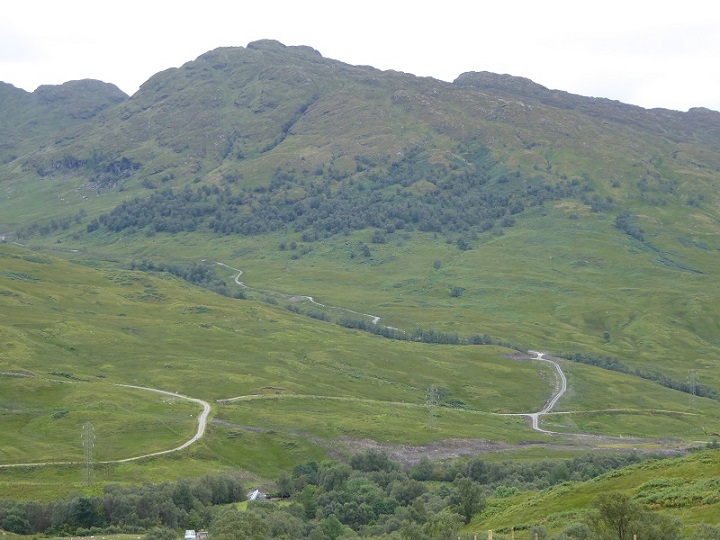
The LLTNPA officers in my view totally failed to present an overwhelming need for these tracks given their impact on the landscape. While the LLTNPA has ignored its own policy, what is worse is there appears no-one in the National Park prepared to stand up for the landscape in the face of developers.
Evidence of this lack of care for landscape can be found throughout the reports that approved the tracks. For example, while the Allt Fionn report notes that the Falloch Estate had constructed “storage” by the Allt Fionn dam without planning permission, there is no consideration of whether this should be retained. The hill goer might have thought the need for a store would disappear with a permanent track, after all there is none by any of the other dams, but its still there.
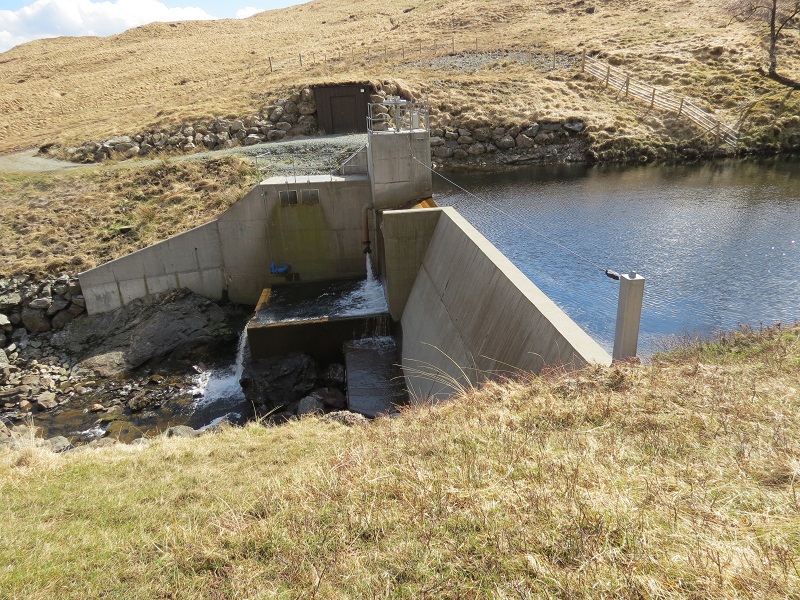
The failure of the LLTNPA to protect the landscape of Glen Falloch is further demonstrated by the way the reports on all four schemes deal with wild land values. Again the LLTNPA has an apparently strong policy position on this in their Renewables Guidance:
“priority will be given to protecting these core areas of wild land character. These areas will
therefore be safeguarded from development which may detract from their relative wildness.”
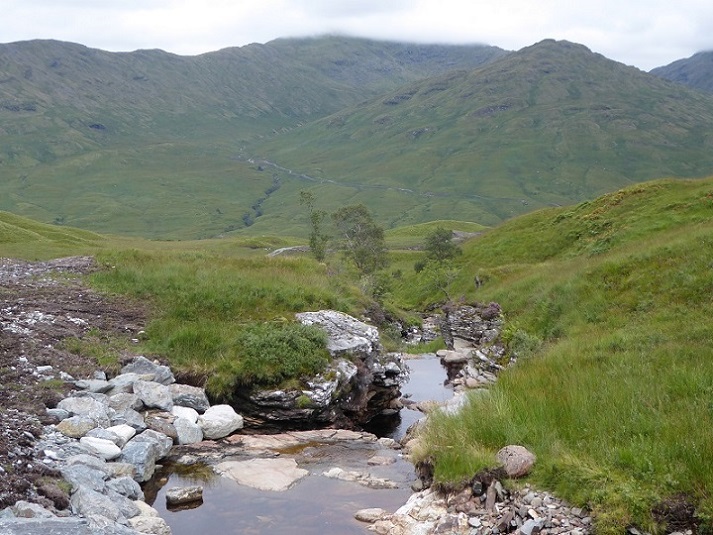
The 2013_0153_det-delegated_report_final-100102998-derrydarroch-tracks clearly states:
It is likely that a permanent track will erode the perception of wildness of this open hill slope; in particular the upper section in core wildness area and the point at which the track approaches the intake and the upper glen where there is intervisibility with Ben Dubcraig. Here the perception of wildness is more apparent and any extensive or adverse development will add to the cumulative impacts of the Glen Falloch schemes.
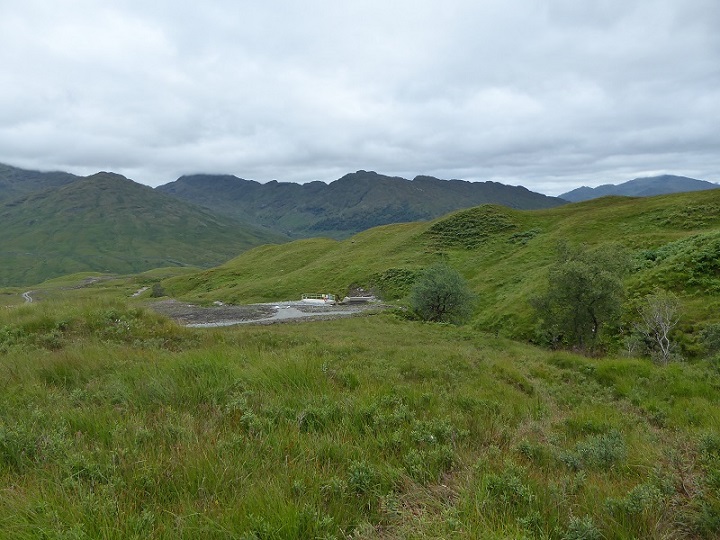
Officers used this argument to approve the track:
The track to intake 2 will enter core wild land, however due to the erosion from argo tracks already evident, it would be preferable to have one small well-designed and integrated stone track to service the intake, rather than increase the environmental damage more widely across the hillside.
This argument is shown to be false by the evidence on the ground.
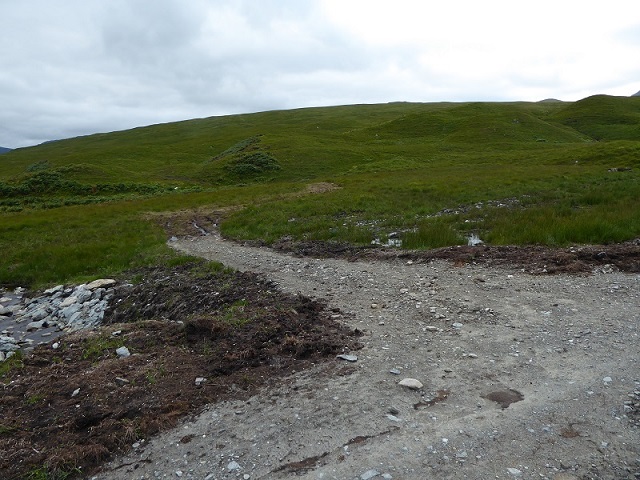
The approval of the hill tracks have done nothing to reduce environmental damage across the hillside. If the National Park is serious about this it could introduce a byelaw to prohibit the use of four wheeled vehicles in areas of core wild land but the reality is it does whatever estates asks. While the Eas Eonan track is the only one to enter a designated area of core wild land, all the other tracks enter buffer areas – again this counts for nothing.
I argued in my first post on the Glen Falloch schemes (see here) that the Ben Glas scheme should never have been allowed because of its wild land qualities and later on that restoration is a myth (see here).
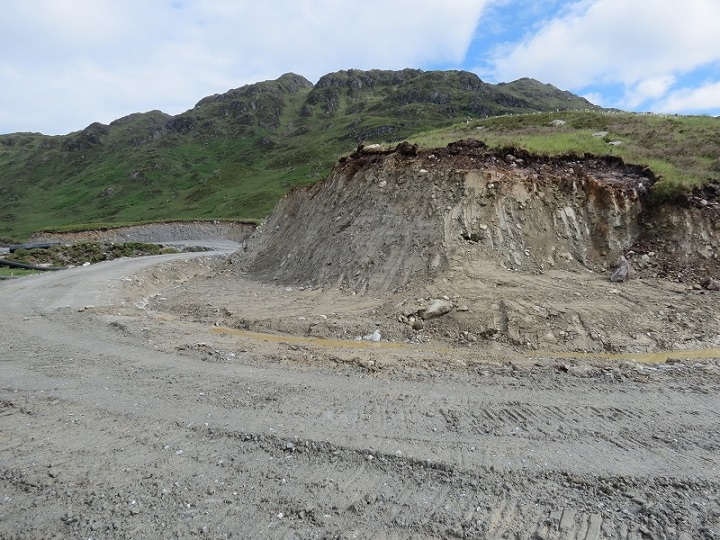
There was an existing track to the Ben Glas burn and the original proposal was that this would be used to access the dams.
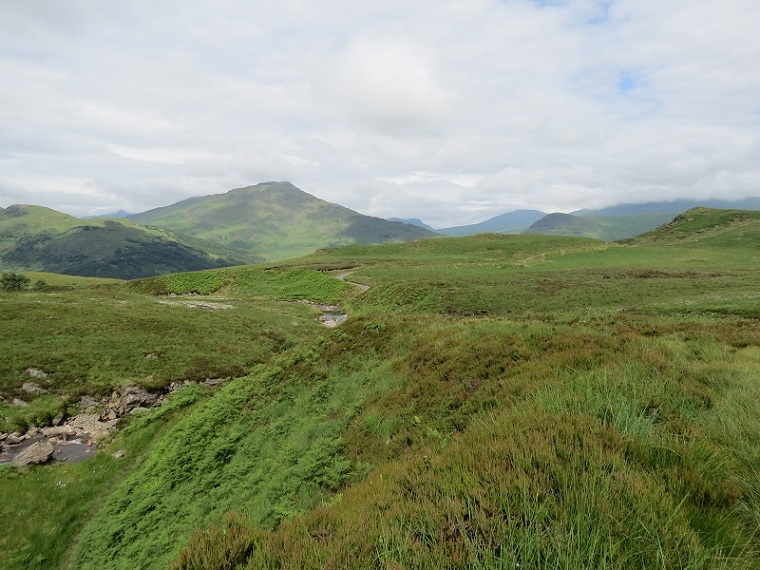
At the end of 2015 however officers agreed that the temporary access track should become permanent. This has created a much bigger scar across the landscape.
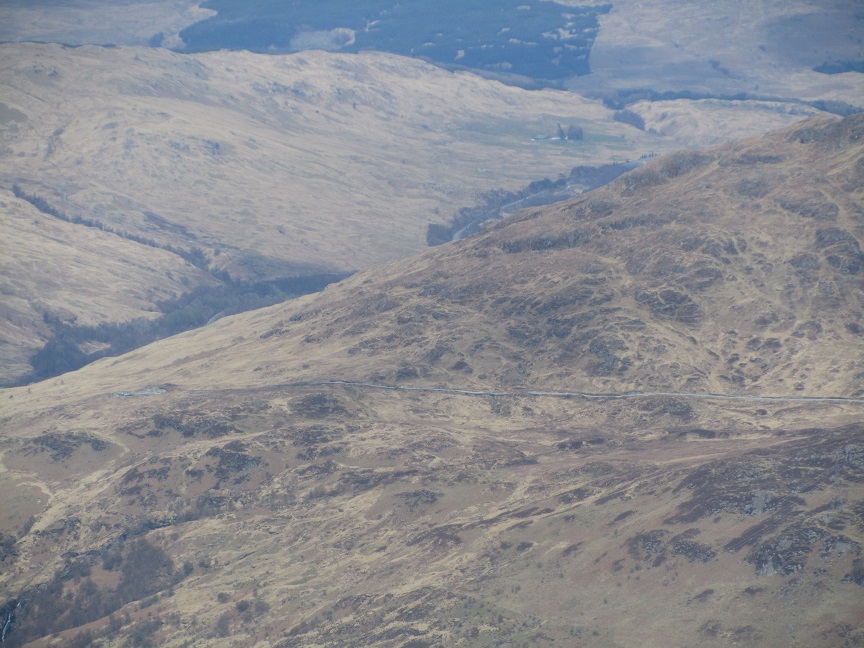
A further effect of this decision is that there will be now be TWO tracks that cross the hillside to the Ben Glas burn. If the LLTNPA cared even an iota about the landscape they might have insisted the original track, which should now be redundant, was restored but they have said nothing.
So what can be done?
All the tracks in Glen Falloch were financed with public money through the extremely generous subsidies that existed till about a month ago for renewable energy developments. The Falloch Estate is making large sums of money from their hydro schemes (about which more in due course), enough money to employ more staff who could have occasionally walked up to the hydro intakes to clear them after storms or to hire the occasional helicopter. These hill tracks were not necessary, which is why the original planning permission required them to be temporary. LLTNPA staff, however, have simply accepted every argument the estate has made, another failure of National Parks to stand up to landowners.
What is worse though is the National Park appears to have extracted not a single improvement or planning gain from the estates in return for approving these tracks. I will address some of the poor construction and design of the Falloch Hydro tracks in a future post (there is plenty of evidence that the LLTNPA has failed to implement its own good practice guidance) but to me it seems the LLTNPA has lost a real opportunity. The impact of a number of these tracks – not all – would disappear if woodland regeneration was allowed to take place. The Upper Glen Falloch track starts just by the Glen Falloch native pinewood, the southernmost remnant in Scotland and long threatened by overgrazing. What an opportunity to allow this pinewood to extend – particularly when all the trackwork has created new mineral soils – but instead the LLTNPA is allowing the state to graze cattle as before which is destroying much of the restoration work. I despair at the lack of any vision.
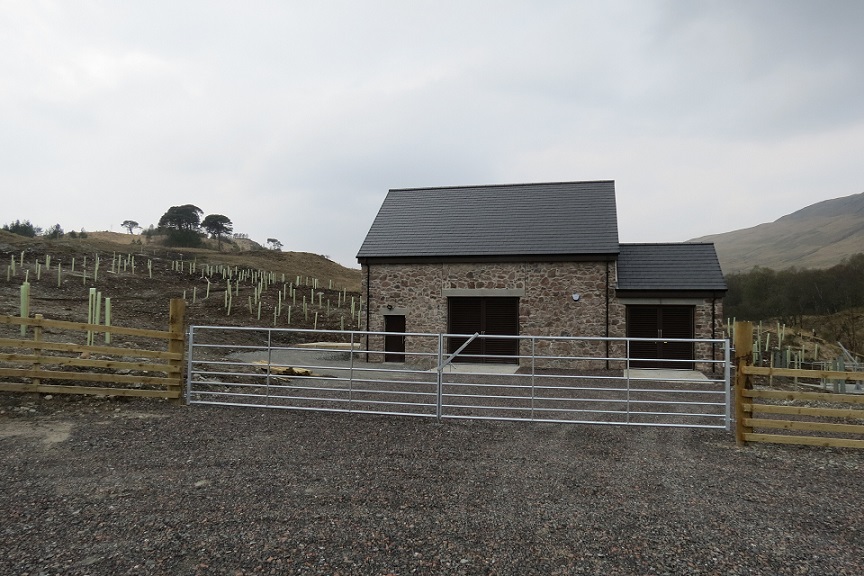
Ultimate responsibility for the terrible decision-making on the Glen Falloch tracks lies not with the poor planner who drafted the reports but with the senior management who approved them and with the Board who have allowed this to happen. Perhaps they could now take a lead on this, not least to demonstrate that they will not simply roll-over when it comes to pressure from Flamingo Land.